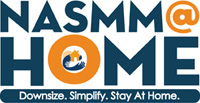
Older people have the highest rate of homeownership in the country — about 80 percent, according to a 2016 report by the Joint Center for Housing Studies at Harvard. The great majority live in single-family homes, most of them poorly suited for the disabilities common in later life.
The center has looked at three of the most important accessibility features that allow people to move safely around their living spaces: entrances without steps, single-floor living, and wide hallways and doorways that can accommodate wheelchairs. “Less than 4 percent of the U.S. housing stock has all three of those,” said Jennifer Molinsky, a senior research associate at the center.
Add two more important elements for aging in place — doors with lever handles, and light switches and electrical outlets that can be reached from a wheelchair — and the proportion drops to 1 percent.
You’ll often hear older people vow that they won’t leave their homes except “feet first.” Without modifications, however, the design of most older Americans’ homes could eventually thwart their owners’ desire to stay in them. (Source: Paula Span, New Old Age, The New York Times, May 19, 2017)
NASMM developed the online NASMM@HOME Specialist course to help you expand your client connections, increase your revenue opportunities, and offer your clients a more comprehensive menu of services. NASMM@HOME will help you reach your clients sooner and under less crisis-driven circumstances.
NASMM’s five (5) module NASMM@Home Specialist training includes the following modules:
Each professionally-narrated module includes a file library with supportive materials for you to customize with your own company’s logo – including a PowerPoint presentation, marketing tools, sample assessments and more.
More important info: